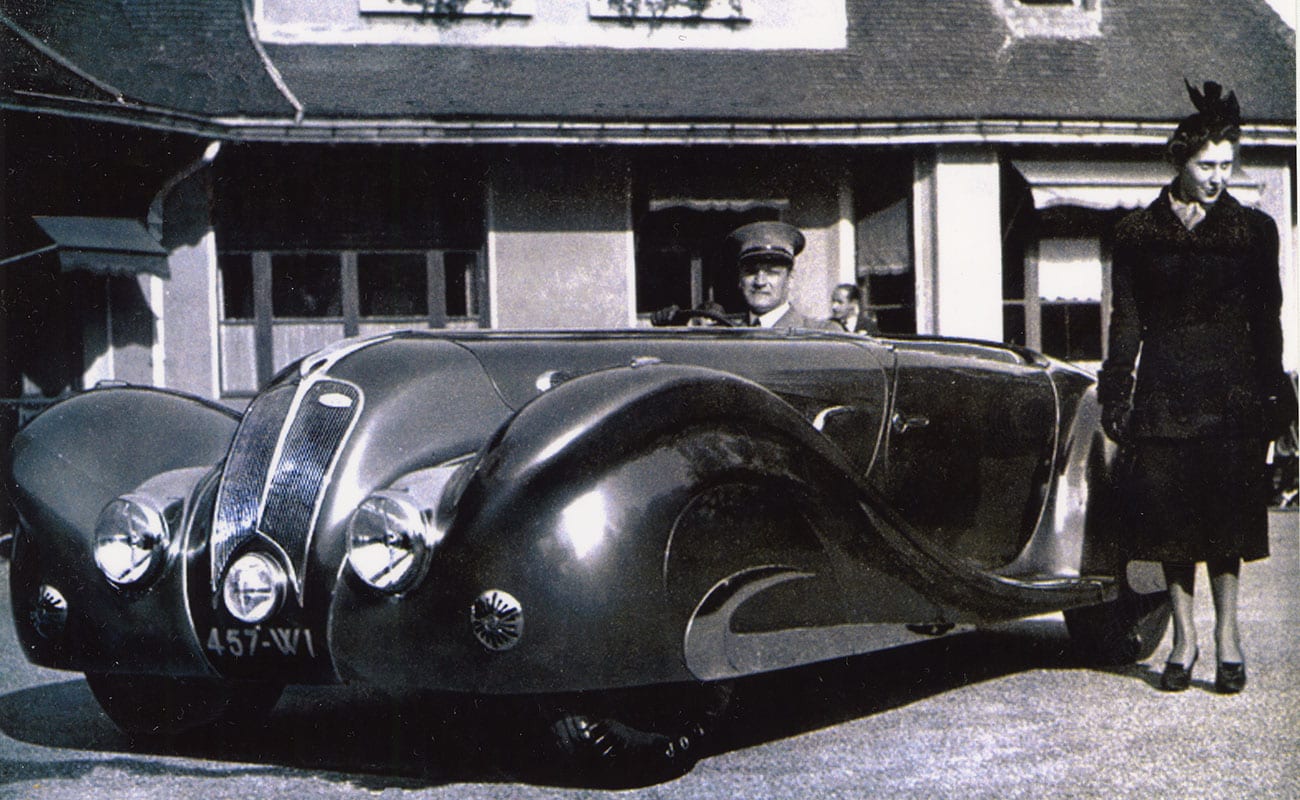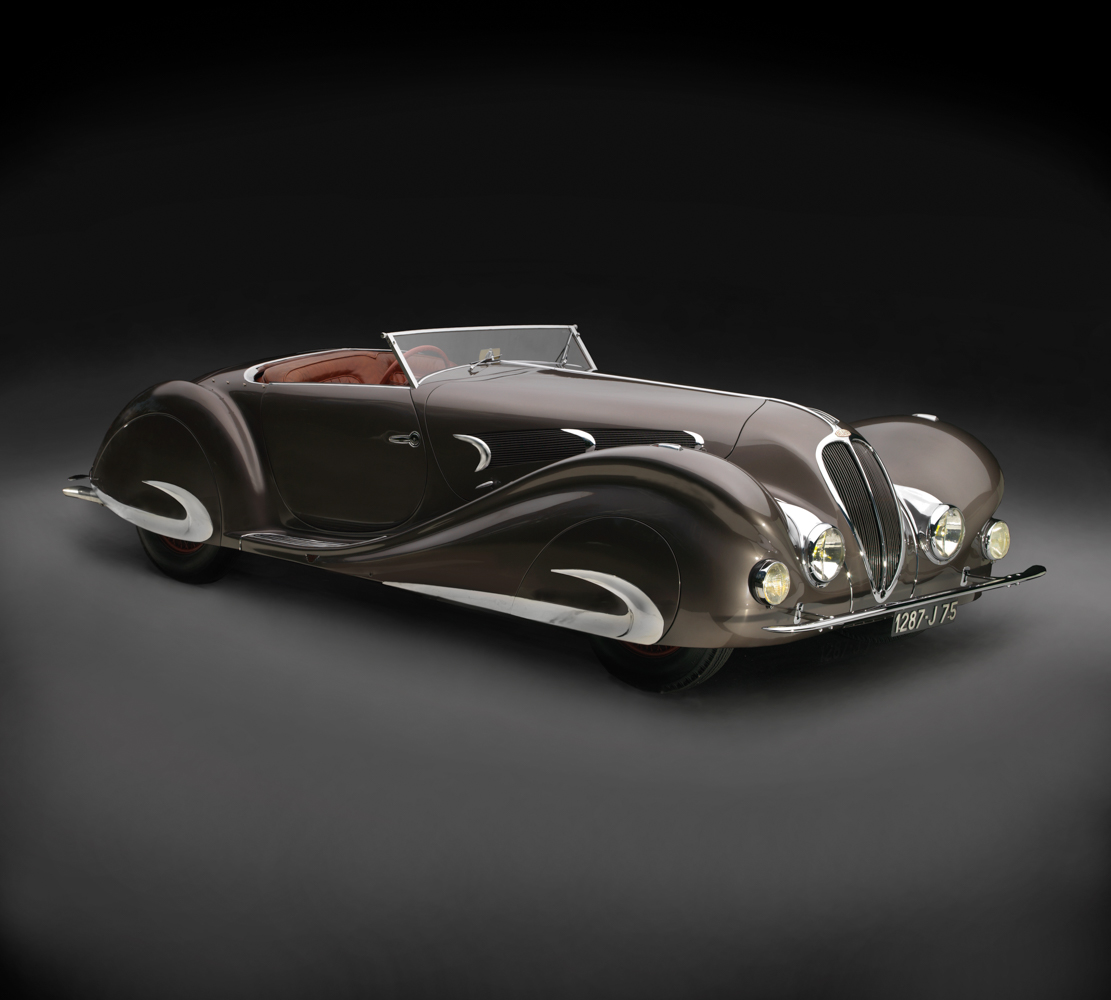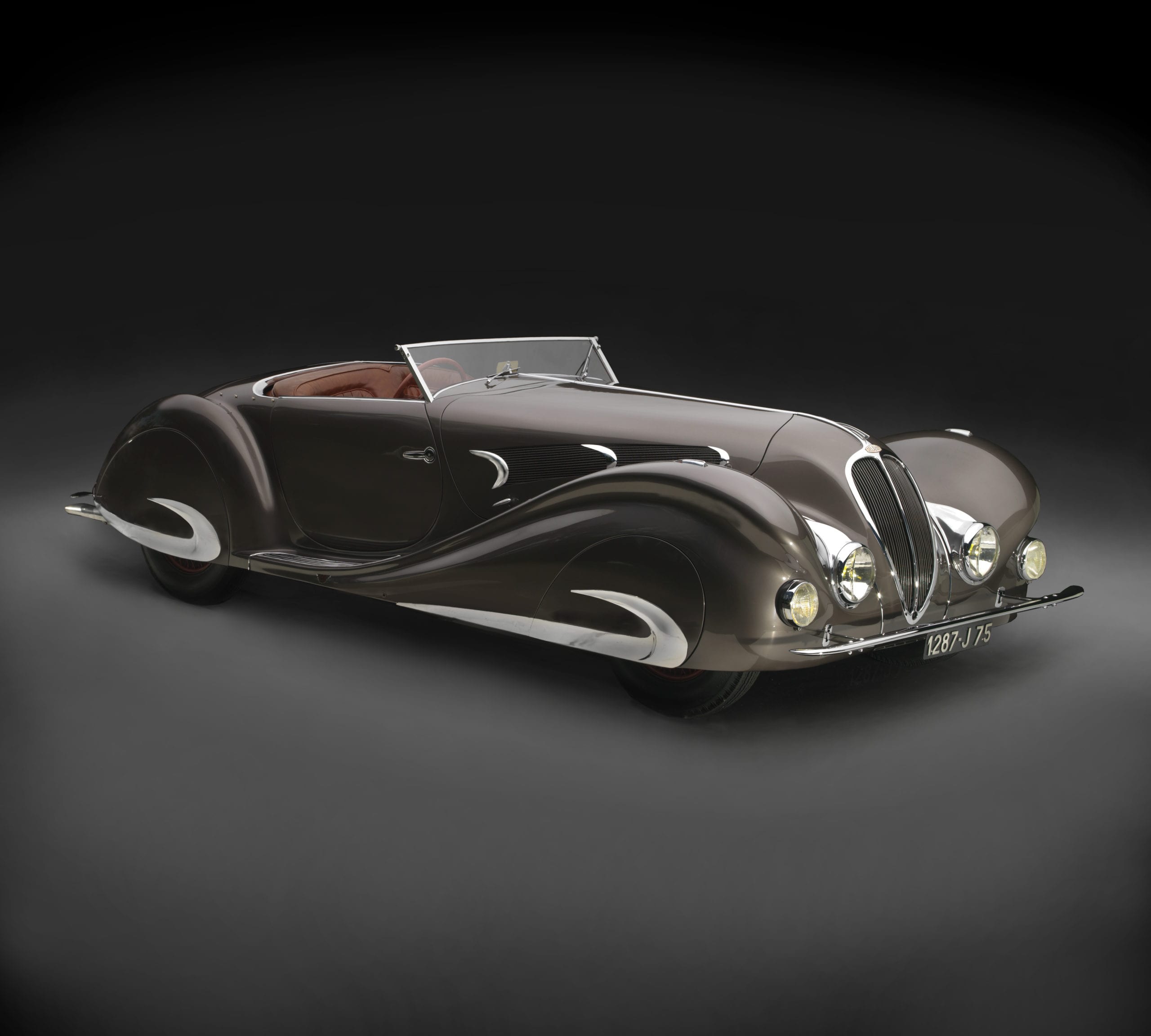Tech Specs
Six-cylinder in-line pushrod engine, two valves per cylinder, 3557 cc, 160 hp at 4200 rpm.
Before/After
1937 Delahaye


About the 1937 Delahaye Type 135MS Special Roadster
Ettore Bugatti is said to have encouraged Delahaye to enter the luxury car field, advice he may have rued. The Parisian automaker heretofore known for dependable, if lackluster, sedans proceeded to challenge Le Patron and other top-market European makers by producing some of the most glamorous cars on the Continent in the mid to late thirties.
A considerable assist was provided by Joseph Figoni, France’s most daring body designer, and Ovidio Falaschi, an Italian businessman who loved spectacular automobiles. Joining the coachbuilders was Figoni’s friend, and noted racing illustrator, Geo Ham, who provided valuable kibitzing in the realization of a new design theme in which wheel-enveloping fenders became the automobile’s dominant factor, while the passenger space became an unobtrusive capsule in between. Aerodynamics was the purported raison d’être of the design but sheer sensuality, which sold more cars than science among Europe’s elite, was a prominent motivation.
This new idea was first seen in a Delahaye roadster that Aly Khan bought off the floor of the 1936 Paris Salon and reached full flowering the following year in the car you see here: the most talked-about automobile at the 1937 Salon. Built on Delahaye’s short competition chassis, this special roadster has aluminum coachwork and a leather interior by Hermes. Most significant are four features that were patented by Figoni & Falaschi: the front fender design, the ultralight tubular seat, the disappearing soft top, and the windscreen that recedes into the body via a system Figoni devised on the principle of a funicular railway.
At the end of 1937, following the show season, the roadster was sold to a private customer who preferred remaining anonymous. The following year the customer brought the car back to Figoni & Falaschi. Bumpers were added front and rear, obviously useful protection in traffic. A new radiator grille was also installed eliminating the cyclops light that had been incorporated into its base, perhaps the one aspect of the show car that had not been a good idea.
Photos – Peter Harholdt








